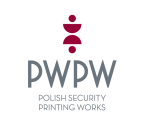Basic information

Passports
A passport or any other travel document authorising its holder to cross state borders is one of the key documents required during international trips. PWPW offers state-of-the-art and tested solutions enabling verification and identification of identity of persons at any place designed for this purpose. E-passports produced at PWPW are equipped with microchips where the key biometric data of the holder is saved, stored and protected, i.e., his/her digital photograph and fingerprints.

















